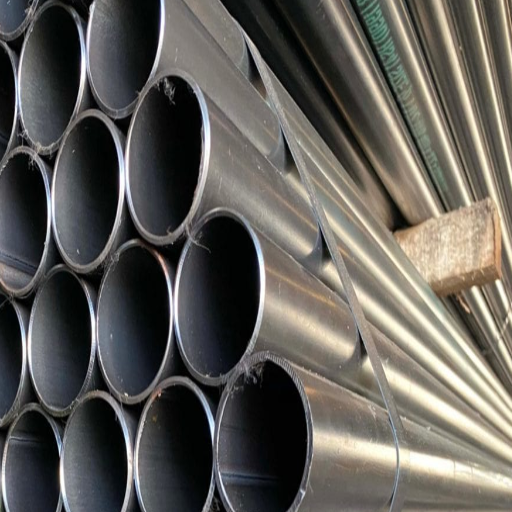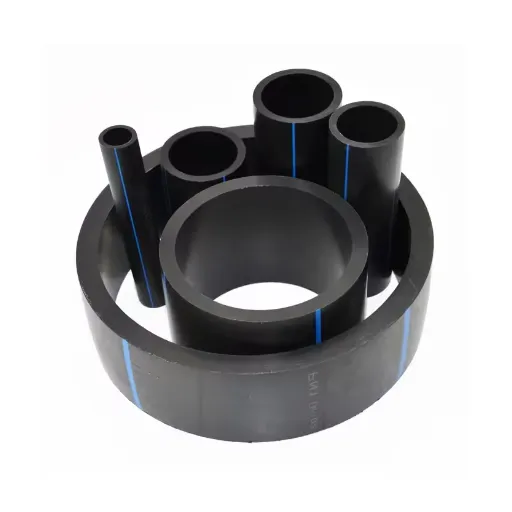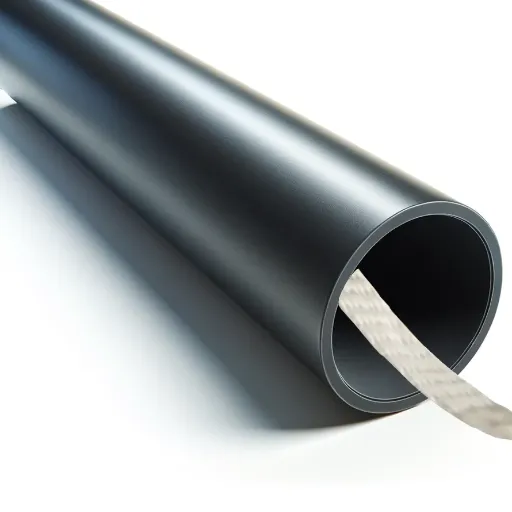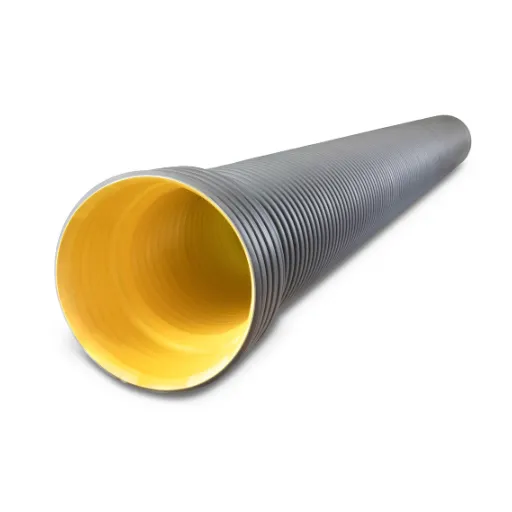Selecting the appropriate drainage pipe is a critical decision that directly impacts the efficiency, durability, and sustainability of any water management system. Whether you’re working on a residential project, commercial development, or agricultural application, understanding the options available and their specific applications is essential. This guide is designed to provide a detailed exploration of the various drainage pipe materials and styles, including their properties, advantages, and limitations. By addressing key factors such as soil conditions, environmental considerations, and compatibility with different drainage systems, this article aims to help readers make informed decisions tailored to their unique project requirements.
What are the most common types of drainage pipes?
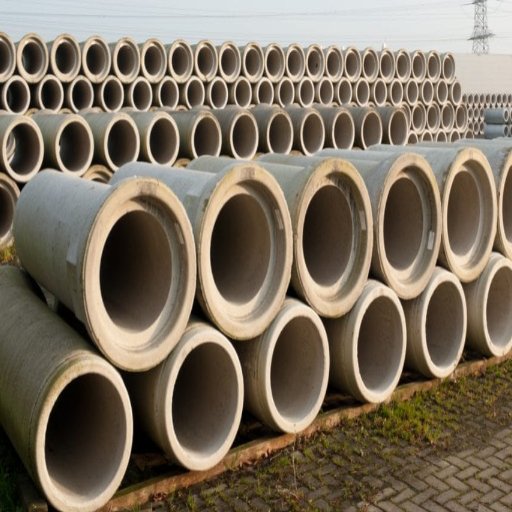
PVC pipes: The versatile choice for drainage systems
PVC pipes stand out as one of the most basic and flexible choices for drainage systems with exceptional adaptability and mechanical attributes. These pipes can preform excellently in a variety of environments because of their lightweight, high durability, as well as high corrosion resistance.PVC pipes display significant resistance to chemicals which enable them to withstand degradation from various waste materials. The controlled and smooth interior surface greatly reduces friction, promoting efficient fluid flow and significantly lowering the risk of blockages.
- Density: ~1.40 g/cm³ – Lightweight and easy to handle during installation.
- Tensile Strength: 4500 psi – Preserves their robust structural integrity under pressure.
- Thermal Conductivity: 0.19 W/(m·K) – Allows stability at a wide range of temperatures
- Maximum Operating Temperature: ~60°C (140°F) – restricts use in high-heat settings.
- Corrosion Resistance: Excellent – Ensures a long service life, especially in chemically active soils.
Due to these characteristics, PVC pipes are especially useful for both household and industrial-level drainage projects, especially where cost and ease of installation are paramount. That said, PVC should be avoided in high-temperature applications, as there is a risk of deformation.
Corrugated pipes: Flexible options for various soil conditions
The flexible nature and strong structure of corrugated pipes make them a good fit for solving problems related to varying soil conditions. These pipes are made of rigid materials such as high-density polyethylene (HDPE) which ensures outstanding impact resistance and promotes longevity. Some of their defining features include:
- Flexibility: High – Can be installed in non-uniform or shifting terrains without compromising the structural integrity in any way.
- Load Capacity: Excellent – Can tolerate high soil loads which makes them ideal for residential and industrial use.
- Resistance to Corrosion: Superior – The HDPE material provides adequate protection against chemical breakdown in varying conditions of soil pH.
- Temperature Range: Operational between -40 degrees Fahrenheit to 140 degrees Fahrenheit – Most environmental conditions can be sustained without appreciable deformation or fatigue.
These properties foster the use of corrugated pipes in soil conditions that are characterized by movement, erosion, or activity of chemicals. Their lightweight also enhances ease of transportation and installation, furthering the reduction of project costs and labor expenditure. To ensure optimal performance, protuberances underneath the pipe and rim of the pipe joint should be adequately installed during setting.
What are the advantages of plastic drainage pipes?
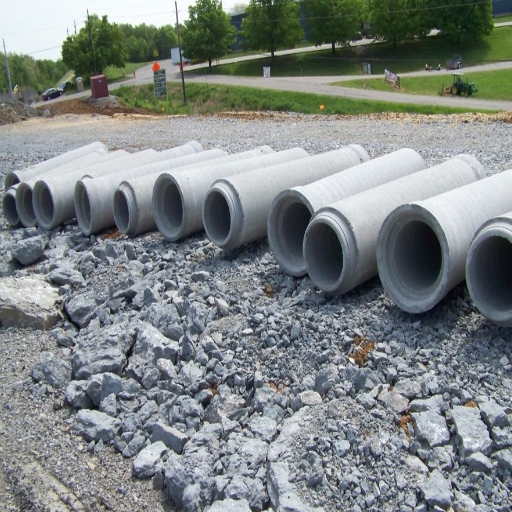
Lightweight and easy-to-install plastic pipe options
Based on my knowledge, the use of drainage pipes made of plastic comes with certain benefits, notably ease of handling and installation. Typical materials for the construction of these pipes are PVC (Polyvinyl Chloride) or HDPE (High-Density Polyethylene), both of which are well-noted for being lightweight and strong. Take, for instance, the handling of HDPE pipes whose density averages 0.95 g/cm³ is a breeze.
The lightweight nature greatly minimizes the costs attributed to transportation and labor needed for installation, which especially benefits large projects or those in isolated areas. Additionally, the incorporation of flexible joint systems or push-fit connectors in plastic pipes makes it possible to deliver fast assembly without ever having to use specialized tools.
Also, from a technical perspective, these pipes serve the purpose of mechanically enduring certain maximum external pressures and temperatures. Consider, for example, HDPE pipes that allow operating under pressures ranging from PN 6 to PN 16 and temperature extremes from -40°F to 140°F. The right handling and installation following the manufacturer’s instructions yields perfect system performance and durability.
Corrosion resistance and long-term durability of PVC drainage
From corrosion resistance, PVC pipes can be reliable for a long time. Unlike metals prone to rusting and chemical reactions, PVC pipes can withstand a variety of corrosive substances such as acids, alkalis, and salts. Therefore, it is ideal for harsh chemical environments and areas of high moisture.
The material composition of PVC pipes offers excellent structural integrity which allows it to pass the test of time. PVC pipes have a typical lifespan exceeding 50 years under standard operating conditions. This can be attributed to the ability to withstand thermal expansion and contraction and environmental factors like UV degradation.
- Thermal Resistance: Effectively performs within a continuous range of operating temperatures up to 140°F, and short-term exposure tolerances up to 158°F.
- Chemical Resistance: Resistant to most acids, bases, and salt concentrations found in domestic and industrial drainage uses.
- Pressure Rating: The nominal pressures that PVC pipes are used with vary from PN 6 to PN 16 depending on its type and application standard.
- UV Protection: Long-term use outdoors calls for the use of UV-stabilized formulations or coatings to prevent degradation.
If PVC drainage systems are installed per the manufacturer’s installation guidelines, they should perform reliably for long periods with very little maintenance. The non-corrosive nature of these systems enables economical operation by preventing system failures resulting from material corrosion.
Cost-effectiveness of plastic pipes for drainage solutions
The adoption of plastic pipes for drainage systems is very economical because they are easy and inexpensive to install. The lightweight construction material does not corrode, thereby eliminating maintenance costs. Also, it is inexpensive which further reduces expenses. For example:
- Longevity: Plastic pipes such as HDPE or PVC have a lifespan of over 50 years, outliving traditional materials like metals by quite a margin.
- Reduction of Labor Costs: The light construction material (PVC density ~1.4 g/cm³) means that the pipes are very easy to transport, easing labor expenditures.
- Resistance to Chemicals: Plastic pipes resist a wide range of chemicals, making them less prone to damage in systems with numerous contaminants.
- Lower Thermal Conductivity: These pipes, PVC in particular, have a thermal conductivity of only 0.19 W/mK, lowering heat loss and enhancing operational efficiency.
Long-term savings and high system reliability are guaranteed, allowing for the far more efficient and practical allocation of resources. In this context, minimal repair costs can be achieved.
When should I use corrugated drainage pipes?
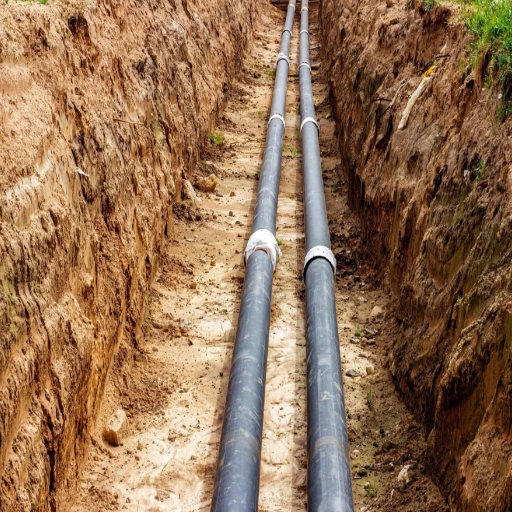
Benefits of single-wall and double-wall corrugated pipes
Single- and double-wall corrugated pipes each have their unique advantages and intended purpose. For my part, single-wall corrugated pipes are ideal for smaller-scale projects where ease of installation is important. Their lightweight makes them ideal candidates for residential or even makeshift drainage systems.
On the other hand, double-wall corrugated pipes were designed for bigger or heavier-duty applications, and these needs are met with double wall’s superior strength. They’re also built with a smooth interior and striated exterior which allows a good flow rate while still being durable. Their low smoothness also means lower Manning’s roughness coefficient (0.009) which allows always higher flow rate versus pipes of the same size. In addition, double-wall pipes having higher resistance to heavy loads renders them more suitable for culverts, drains on roads, or even big agricultural systems.
Both options are corrosion resistant because of HDPE giving it a longer lifespan and less maintenance. These provisions are critical for a single wall. Deciding factors for single-wall and double-wall pipes cut down to the particulars of the project, determining both load and flow as well as conditions of installations.
Applications for perforated corrugated pipes in French drains
Perforated corrugated pipes are popular in French drains because of their adaptability to different sites and their precise drainage capabilities. From my work, these pipes manage groundwater, while relieving hydrostatic pressure in soil. Water can freely flow into the pipe but is unable to enter through debris, which makes these pipes perfect for residential yard drainage, retaining wall drainage, and estuary foundation protection.
- Pipe Diameter: Used in households having a 4-inch diameter while reaching 8 inches or more in commercial settings. This ensures smooth passage for retaining structures or high-flow applications.
- Flow Capacity: Drainage responsibilities are adequately attended to because of the structural integrity provided by the HDPE perforated corrugated pipes.
- Perforation Patterns: Specific soil types and water levels require a specific density of perforations for efficient and optimal water entry; hence pipes should be chosen based on alignment density.
- Backfill Material: To prevent soil from clogging the perforations, coupling the pipes with clean gravel improves water infiltration.
In the design of the drainage systems, I rely on their potential to balance the cost, durability, and efficiency with the requirements of the site. Choosing the right specifications guarantees proper performance in controlling soil saturation and water accumulation.
Flexibility and strength of corrugated pipes in outdoor drainage
The combination of high flexibility and high rigidity makes corrugated pipes viable for use in outdoor drainage systems. Their flexibility enables an effortless adaptation to uneven terrain without compromising the efficiency of the system. This adaptability is particularly effective in regions where sharp directional changes or installations around existing obstacles are required. Structurally, the corrugations bolster the pipe’s load-bearing ability, allowing it to endure significant external pressures without deformation. For instance, soil loads or vehicular traffic.
- Material Composition: High-density polyethylene(HDPE) exhibits high durability, is chemically resistant, and very lightweight, which is why it is typically used.
- Pipe Stiffness: For standard installations, the site conditions determine this parameter, which is usually 5kN/m² or higher.
- Joint Tightness: Dependable joint systems equipped with gaskets or snap connections are used, which provide water-tight seals, preventing leaks or sediment ingress.
- Diameter Range: For common infrastructure, prevalently employed diameters range from 4 inches (100 mm) in residential systems to 60 inches (1500 mm).
By aligning these factors with site-specific requirements, I ensure the efficient and long-lasting performance of corrugated pipes in outdoor drainage systems.
What are the best drainage pipe options for outdoor applications?
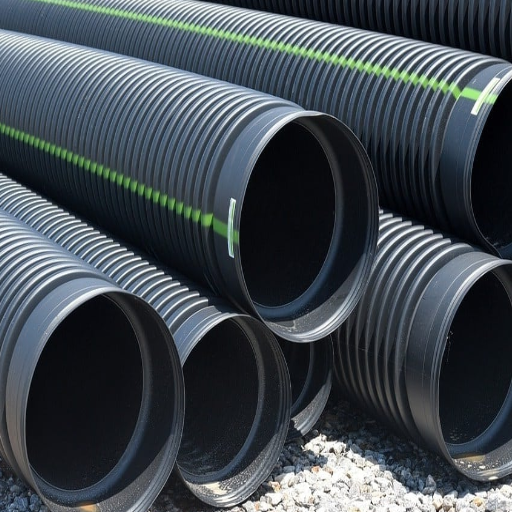
Choosing pipes for gutter and downspout drainage systems
When selecting pipes for gutter and downspout drainage systems, I consider several key factors to ensure optimal functionality and longevity. For most residential applications, I recommend corrugated HDPE (High-Density Polyethylene) pipes due to their lightweight nature, flexibility, and corrosion resistance. These pipes are particularly effective in handling typical water loads and preventing clogs when paired with proper filtration.
- Diameter: A 4-inch (100 mm) diameter is often sufficient for residential downspouts; however, larger systems may require diameters up to 6 inches (150 mm) to accommodate higher flow rates.
- Load Rating: For areas with vehicular loads, pipes should comply with AASHTO (American Association of State Highway and Transportation Officials) standards, ensuring they withstand necessary structural demands.
- Material Resistance: HDPE pipes are chemically inert and highly durable, providing a service life that can exceed 50 years in standard conditions.
By prioritizing these technical aspects and compatibility with site-specific requirements, I ensure efficient drainage systems that require minimal maintenance over time.
Solving standing water issues with the right outdoor drain pipes
To manage standing water effectively, I evaluate the onsite conditions and select outdoor drain pipes that best meet the technical criteria. For example:
- Pipe Diameter: I select pipe diameters according to the desired flow rate which ranges from 4 inches (100 mm) for residential use to over 6 inches (150 mm) for commercial or industrial applications.
- Load Capacity: I ensure the pipes meet AASHTO standards for areas that are subjected to vehicular or heavy loads to guarantee that they can be structurally sound under such loads.
- Material Durability: I usually focus on materials like HDPE that have high resistance to chemicals and an expected service life of over fifty years under normal conditions.
By tailoring these factors to the site’s specific drainage demands, I can provide a durable and efficient solution to eliminate standing water while minimizing long-term maintenance requirements.
How do concrete and clay drainage pipes compare to modern alternatives?
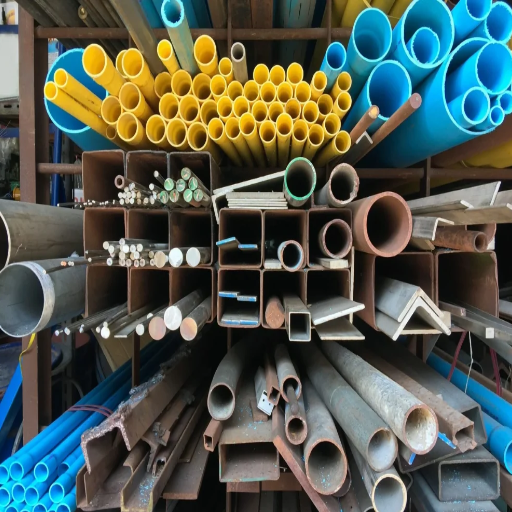
Durability and longevity of concrete and clay pipes
Clay and concrete pipes are well known for their structural integrity and durability over many years. As an example, concrete pipes properly installed and maintained can last for over a hundred years. Their compressive strength makes them ideal for applications where heavy loads are present. Clay pipes, on the contrary, are very brittle when it comes to mechanical stress, however, they are incredibly durable in terms of chemical corrosion, allowing them to last on average more than 50 years.
Concrete pipes can compress strength ranging from 4,000 to 8,000 psi depending on the mix design and curing processes. Furthermore, concrete pipes are often reinforced to increase their load-bearing capacity. Such pipes tend to meet ASTM C76 standards. For clay pipes, non-reactionary ones are best suitable to the wastewater system because of ASTM C700 standards, low wear, and acid-resistant properties.
Both pipes mentioned above, tend to be stronger, but modern alternatives such as HDPE or PVC are much lighter, resistant to corrosion, and have a long structural life. Hence, these materials are favored over the previous ones in most situations. However, these materials do not withstand the same load and chemical exposure as concrete and clay, making them problematic in some high-exposure projects.
Limitations and challenges of traditional drainage materials
Regardless of their strong history, traditional drainage materials, such as concrete or clay pipes, face limitations of their own:
- Weight and Transportation Costs: The transportation and installation costs are expected to increase since concrete and clay pipes are heavier than modern materials, like HDPE and PVC. For instance, a 10-foot concrete pipe can weigh over 2000 pounds depending on the diameter, so specialized equipment is required to handle and transport the pipes.
- Corrosion Susceptibility: While concrete pipes are very vulnerable and susceptible to chemical degradation in high sulfate circumstances, clay pipes do have strong acid resistance. Studies show that sulfate levels greater than 1500 ppm can lead to unprotected concrete deterioration.
- Maintenance Issues Estimation: Conventional approaches and tactics may need more maintenance in the long run. For example, due to ground movement or improper installation, concrete pipes may develop leaks or gaps in joints, leading to the system’s deterioration.
- Limited Flexibility: Out of both concrete and clay pipes, the latter lack polymer flexibility and are still vulnerable to dynamic loads, as well as rotational shifts. Take repeated freeze-thaw cycles, for example, they lead to stress cracking in the concrete.
- Concerns about Sustainability: The manufacturing process of cement incurs heavy carbon emissions which, along with the energy-consuming processes involved in the manufacturing of concrete pipes leads to an overall negative impact. Similarly, the production of clay pipes requires firing in kilns which consumes a significant amount of energy.
- Prospective Savings On Lower Budget Projects: Because they are long-lasting, clay pipes are appealing but are far more expensive than the lightweight substitutes in use today. In addition, how their joints are sealed and the way they are put in place consumes more time and labor adding to the costs.
All in all, most contemporary applications are better served with modern polymer-based materials due to ease of use impacts, chemical reactivity, and long-term sustainability management. These traditional materials retain their importance in specific environments such as those needing high-strength or extremely high-temperature components.
Modern alternatives to concrete and clay drainage pipes
Today’s drainage systems utilize polymers, like High-Density Polyethylene (HDPE) and Polyvinyl Chloride (PVC), instead of traditional materials like concrete or clay pipes, because of the significant advantages these modern materials have over the latter. These alternatives are highly efficient and flexible, resolving the issues of cost and performance in modern engineering.
- Weight and Durability: Due to advancements in technology, transportation, and installation costs are even lower with HDPE and PVC pipes since they are much lighter than traditional polyethylene pipes while still maintaining excellent tensile strength, outmatching traditional materials. In addition, high-density polyethylene is durable, allowing it to endure high-impact forces and dynamic loads.
- Chemical Resistance: HDPE and PVC pipes also exhibit strong resistance to chemical corrosion, which is crucial when dealing with aggressive acids or alkaline substances. For example, HDPE can endure chemical interactions in varying pH levels ranging from 1 to 14, making it useful in harsh environmental challenges.
- Thermal Performance: In addition, HDPE pipes are known for high thermal capacity enabling them to withstand elevated temperatures while enduring mild degradation. These pipes have a continuous operating temperature range of -40°F to 140°F. these figures can be further improved with specialty grades, ensuring suitable application around the globe.
- Sustainability Considerations: These new materials are considerably more energy-efficient to manufacture as compared to concrete/clay, plus they can be recycled. The approach employed, therefore, has a significantly lower carbon footprint which is a step towards achieving sustainability targets for infrastructural development.
Incorporating polymer-based materials with existing drainage systems allows for addressing major engineering challenges in a manner that is efficient in cost, time, and environmental impact. These materials are ideal for modern sustainable operational design of drainage systems as they are more advanced and incorporate a higher level of engineering skill.
Reference sources
Frequently Asked Questions (FAQs)
Q: What are the most common types of drainage pipes?
A: The most common types of drainage pipes include PVC, ABS, copper pipes, iron pipes, cast iron pipes, concrete, and clay pipes. Each type has its strengths and is suited for different drainage applications.
Q: How do I choose the right type of drainage pipe for my project?
A: To choose the right pipe, consider factors such as the drainage situation, soil type, climate, local building codes, and budget. It’s best to consult with a professional plumber or drainage expert to ensure you get the right pipe for your specific needs.
Q: What are the advantages of using PVC drainage pipes?
A: PVC drainage pipes are popular due to their lightweight nature, durability, and corrosion resistance. They are also cost-effective, easy to install, and come in various sizes. PVC pipes are typically used for residential plumbing and drainage systems.
Q: Are cast iron pipes still used for drainage?
A: Yes, cast iron pipes are still used for drainage, especially in commercial and industrial applications. They are known for their strength, longevity, and sound-dampening properties. However, they are heavier and more expensive than plastic alternatives.
Q: What are the benefits of smooth wall pipes in drainage systems?
A: Smooth wall pipes, like PVC and ABS, offer several advantages in drainage systems. They provide better flow characteristics, reduce the risk of clogs, and are easier to clean. Smooth wall pipes are also less likely to accumulate debris, making them ideal for various drainage applications.
Q: When should I consider using copper pipes for drainage?
A: Copper pipes are typically used for water supply lines rather than drain lines. However, they can be used in some drainage applications where corrosion resistance and durability are crucial. Copper pipes are often preferred in areas with aggressive soil conditions or where longevity is a primary concern.
Q: What are perforated pipes, and when are they used?
A: Perforated pipes have small holes or slots along their length, allowing water to enter or exit the pipe. They are commonly used in underground drainage systems, such as French drains, to collect and redirect groundwater away from foundations or waterlogged areas.
Q: How do galvanized pipes compare to other types of drainage pipes?
A: Galvanized pipes are steel pipes coated with zinc to prevent rust and corrosion. While they were once popular for plumbing and drainage, they are less common today due to their tendency to corrode over time. PVC and other modern materials have largely replaced galvanized pipes in drainage applications.
Q: What types of drainage pipes are best for storm sewers?
A: For storm sewers, concrete, corrugated HDPE (high-density polyethylene), and large-diameter PVC pipes are commonly used. These pipes are strong, durable, and capable of handling large volumes of water. The choice often depends on local regulations, soil conditions, and the specific requirements of the drainage project.
Q: How do I address common drainage problems with the right pipe choice?
A: To address common drainage problems, select pipes based on the specific issue. For example, use perforated pipes for yard drainage, smooth wall PVC for residential sewer lines, and larger diameter pipes for areas prone to flooding. Additionally, consider installing catch basins or cleanouts to facilitate maintenance and prevent clogs in your drainage system.



